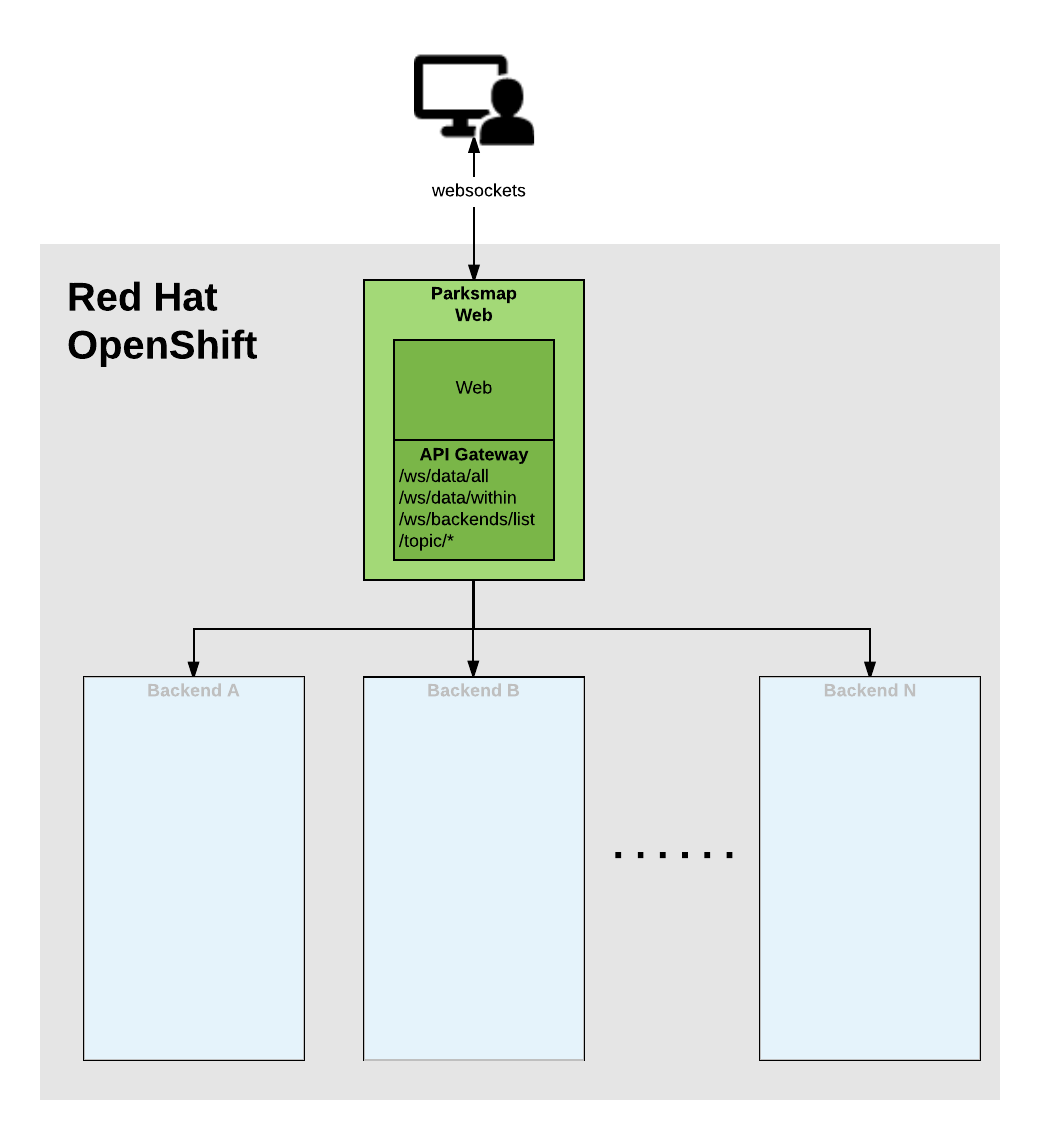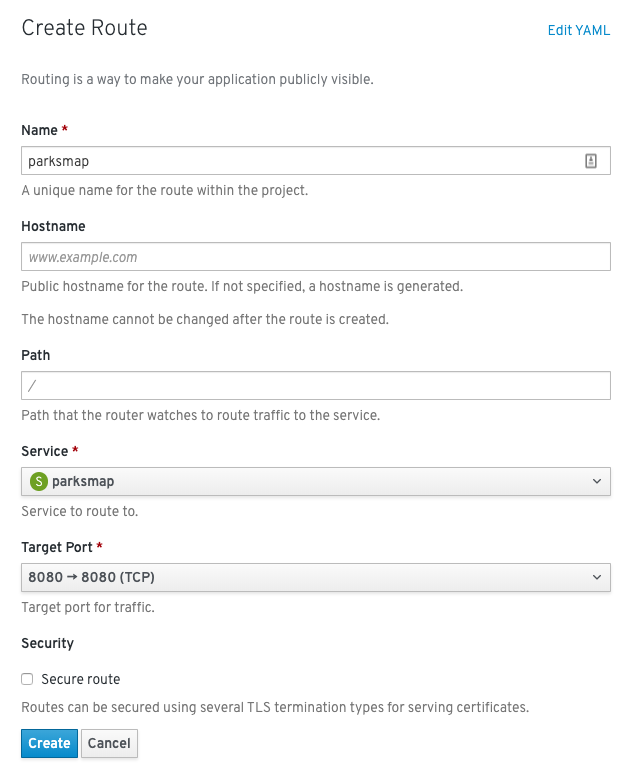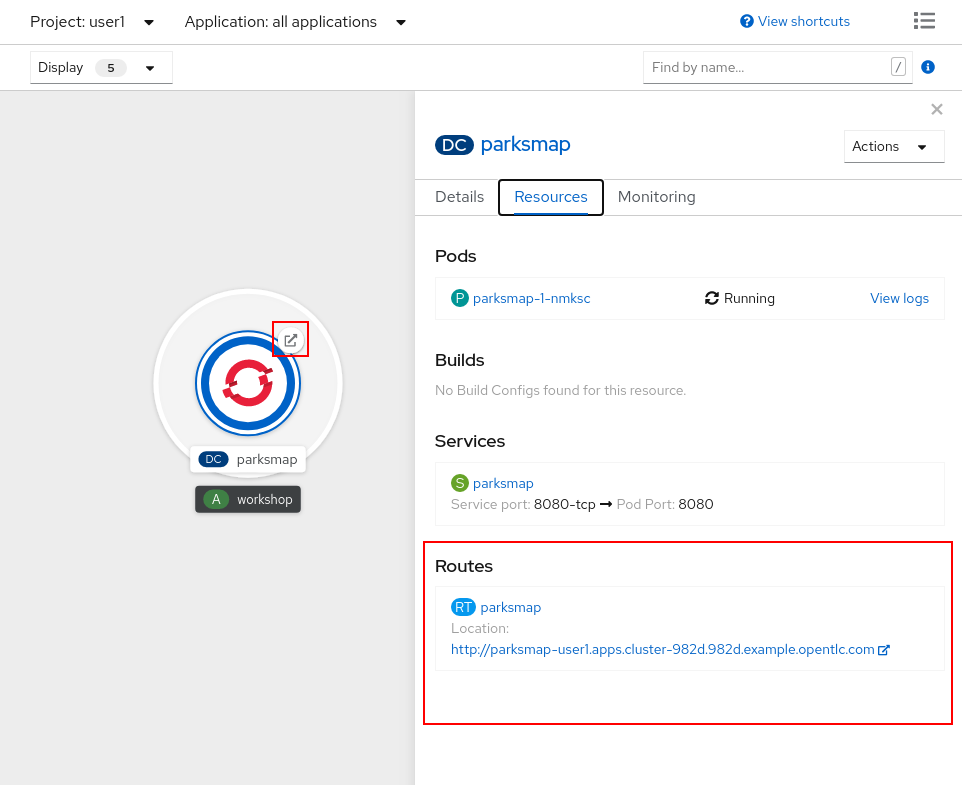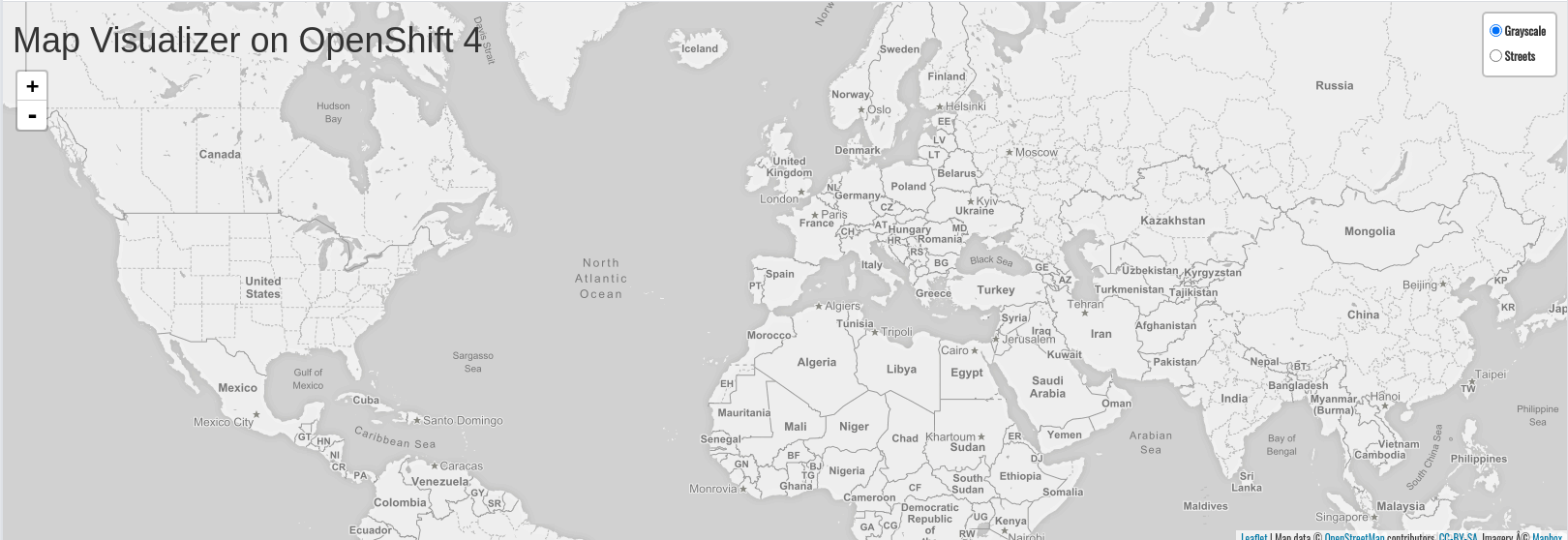Routes
In this lab, we’re going to make our application visible to the end users, so they can access it.

Background: Routes
While Services provide internal abstraction and load balancing within an OpenShift environment, sometimes clients (users, systems, devices, etc.) outside of OpenShift need to access an application. The way that external clients are able to access applications running in OpenShift is through the OpenShift routing layer. And the data object behind that is a Route.
The default OpenShift router (HAProxy) uses the HTTP header of the incoming request to determine where to proxy the connection. You can optionally define security, such as TLS, for the Route. If you want your Services, and, by extension, your Pods, to be accessible from the outside world, you need to create a Route.
Exercise: Creating a Route
You may remember that when we deployed the parksmap application, we un-checked the checkbox to
create a Route. Normally it would have been created for us automatically. Fortunately, creating a Route is a pretty straight-forward process. You simply expose the Service via the command line. Or, via the Administrator Perspective, just click Networking → Routes and then the Create Route button. Choose the Service you want to expose and enter values as shown in the following image:

When creating a Route, some other options can be provided, like the hostname for the Route or the TLS configuration for the Route.
When using the command line, we can first verify that we don’t already have any existing Routes:
oc get routesNo resources found.Now we need to get the Service name to expose:
oc get servicesNAME CLUSTER-IP EXTERNAL-IP PORT(S) AGE
parksmap 172.30.169.213 <none> 8080/TCP 5hOnce we know the Service name, creating a Route is a simple one-command task:
oc expose service parksmaproute.route.openshift.io/parksmap exposedVerify the Route was created with the following command:
oc get routeNAME HOST/PORT PATH SERVICES PORT TERMINATION
parksmap parksmap-workshop.%CLUSTER_SUBDOMAIN% parksmap 8080-tcpYou can also verify the Route in the Developer Perspective under the Resources tab for your parksmap deployment configuration. Also note that there is a decorator icon on the parksmap visualization now. If you click that, it will open the URL for your Route in a browser.

This application is now available at the URL shown in the Developer Perspective. Click the link and you will see:
